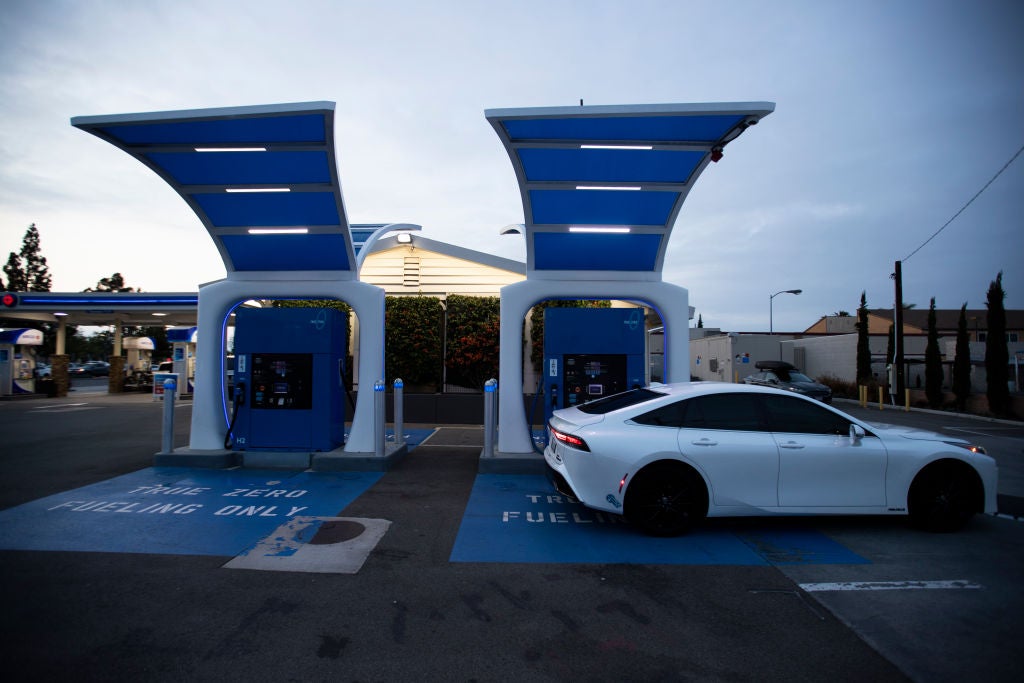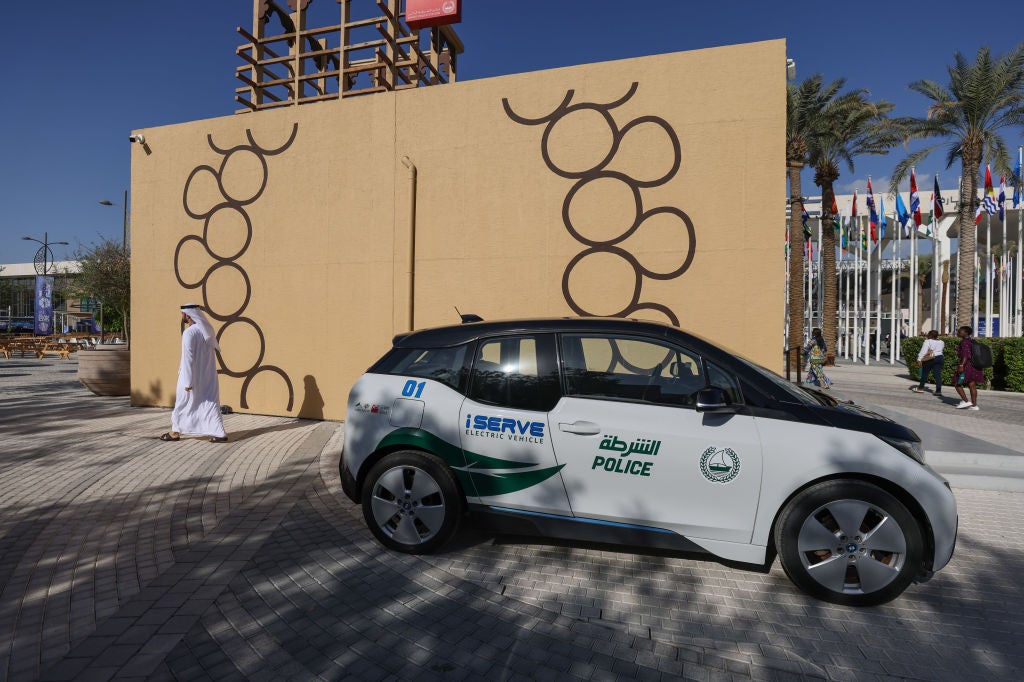On 13 October, the US Department of Energy (DOE) announced the recipients of funds from its new Regional Clean Hydrogen Hubs funding programme. Seven hubs will receive part of $8bn set aside in the Infrastructure Investment and Jobs Act (IIJA) for hydrogen development with hopes of drawing an additional $40bn from private investment. The Alliance for Renewable Clean Hydrogen Energy Systems (ARCHES) in California and the HyVelocity Hydrogen Hub in Texas reeled in the largest pots of federal funding at $1.2bn each. The smallest hub, which aims to unlock clean hydrogen production across Pennsylvania, Delaware and New Jersey, was awarded $750m.

Credit: US Department of Energy, Office of Clean Energy Demonstrations, 2023: https://www.energy.gov/oced/regional-clean-hydrogen-hubs-selections-award-negotiations.
While the winners deserve their spoils, the remaining 26 hub proposals, which received letters of encouragement but not funding, deserve further consideration. Incentives remain regardless of hub status – most notably forthcoming production tax credits for clean hydrogen in the Inflation Reduction Act (IRA). However, there are other opportunities, such as $1bn in DOE funds for more efficient and cost-effective electrolysers. Two non-selected multi-state proposals in particular are well placed to fill a critical gap in the emerging US national hydrogen network.
WISHH: Hydrogen-powered trucks
The Western Interstate Hydrogen Hub (WISHH) proposal includes eight production projects to build out a hydrogen ecosystem in the Rocky Mountain region. Four states – New Mexico, Utah, Colorado and Wyoming – have partnered with three national laboratories and 12 research universities, with additional support from regional utilities, tribal nations and labour unions.
Following the DOE hub funding announcement, New Mexico Governor Michelle Lujan Grisham said that the partnership could move forward without federal support – noting that all private companies remained on board. While losing the $1.25bn of funding that WISHH petitioned for will likely result in some of the proposed projects falling short, Grisham’s “bullish outlook” has merit and should be encouraged.
Among the eight projects included in the WISHH proposal, four are based in New Mexico and remain under development. The most promising of these is managed by Libertad Power, a green hydrogen production company working to develop a network of fuel stations for hydrogen-powered trucking, supplied by its electrolysis plant near Farmington.
Libertad wants to make New Mexico the genesis of a Southwest Clean Freight Corridor (SWCFC) connecting the Port of Los Angeles to West Texas for hydrogen-powered, long-distance trucking. In collaboration with Hyundai Motor Co. and fuel supply company Diesel Direct, the SWCFC seeks to combine expertise in clean hydrogen production, heavy-duty vehicle manufacturing and fuel distribution systems to enable sustainable freight transport along one of the nation’s most important long-haul corridors.
The Federal Highway Administration projects that average daily truck traffic on the interstate I-10 could reach 20,000 by 2035. Introducing hydrogen refuelling stations along it would represent a significant first step towards decarbonising medium and heavy-duty trucking, which accounts for 23% of total US transportation emissions.
The plan is to gradually scale up production from Libertad’s modular electrolysis facility in Farmington as Diesel Direct builds out refuelling stations. Hyundai hopes to capitalise on the expanded infrastructure as it begins to roll out its XCIENT fuel cell truck in the US, which is already operating in Europe and Asia. Nikola, Cummins and Toyota – which recently piloted its Class 8 fuel cell trucks at the Port of Los Angeles – also intend to launch hydrogen-fuelled medium and heavy-duty vehicles before the refuelling network’s expected launch in 2025.
Mounting evidence points towards hydrogen as the best alternative to diesel for long-haul trucking, but the lack of an accompanying refuelling infrastructure remains a problem. Beginning in New Mexico, WISHH could expand a nascent network of hydrogen refuelling stations in one of the most important long-distance freight corridors in the country.
SHINe: completing the corridor
The Southwest Hydrogen Innovation Network (SHINe) coalition benefits from the same natural endowments as WISHH: ample solar intensity across Arizona, Nevada and the Navajo Nation, and prime positioning as the western half of the transportation corridor between California and Texas. In addition to stimulating production of clean hydrogen, SHINe’s proposal focuses on developing local connective infrastructure, distribution networks and storage. A total of 40 organisations – including EDF Renewables, NextEra Energy and Air Liquide – participated in the proposal and remain committed to the development of a hydrogen ecosystem.
Solar energy potential is where SHINe’s aptly named proposal shines. Nevada and Arizona rank first and second in the US for solar potential, while Arizona holds fifth spot for total solar-powered generating capacity with 5,483MW. Hundreds of applications for new utility-scale solar projects are under consideration, bolstered by Nevada’s Senate Bill 358 and permitting directives for 25GW of solar, wind and geothermal production on public lands by 2025. While both states still rely on fossil fuels (predominantly natural gas) for most of their net electricity supply, combined growth in solar generation capacity is projected to reach 15.48GW over the next five years. As renewable energy scales up and drives prices down, SHINe has the potential to produce some of the lowest-cost green hydrogen in the US – with one overwhelming caveat.
[Link src="https://www.energymonitor.ai/all-newsletters/" title="Keep up with Energy Monitor: Subscribe to our weekly newsletter" font-size="20px"]Water scarcity is the biggest barrier to producing green hydrogen in the south-west. Since 2000, Nevada and Arizona have faced prolonged droughts brought on by historically below-average precipitation levels, population booms and overconsumption of the region’s main river basins. In August, the Federal Bureau of Reclamation reduced Arizona’s Colorado River allocation by 592,000 acre-feet for 2023, a significant supply cut that will put a dent in the state’s seven million acre-foot annual water consumption.
At first glance, water scarcity – likely a contributing factor to the DOE’s decision to allocate funds elsewhere – may seem to halt aspirations for hydrogen development in their tracks, but SHINe should not be dismissed so easily. Green hydrogen could in fact benefit water conservation efforts as an alternative to existing, water-intensive energy and fuel production methods.
Current electrolysers can produce 1kg of green hydrogen from nine litres of water with an additional 10–20 litres/kg for cooling and purification. However, traditional (‘grey') hydrogen made from natural gas via steam methane reforming (SMR) actually requires a similar amount of water, while SMR plants equipped with carbon capture and storage technology ('blue' hydrogen) demand an additional 2–9 litres/kg of water on average. When factoring in upstream water consumption from natural gas drilling, extraction and processing, green hydrogen’s water conservation case becomes even more persuasive.
Green hydrogen also outperforms conventional diesel when comparing each fuel's water intensity. Recent RMI analysis demonstrated that 300 litres of water could produce enough green hydrogen to drive a fuel cell truck more than 235km, while the same amount of water produces enough diesel to cover only 141km.
SHINe should embrace the difficulties posed by water scarcity in the region to raise awareness for the water conservation opportunities presented by green hydrogen, drive further innovation for increased electrolyser efficiency and develop new approaches for circularity in the hydrogen life cycle (some end use cases including steel production result in conversion of hydrogen back into water).
WISHH and SHINe: US hydrogen hubs that offer new opportunities
WISHH and SHINe lie between the two largest subnational economies and hydrogen hubs (ARCHES in California and HyVelocity in Texas) in the US. Leveraging the surrounding economic geography and the region’s solar and wind intensity – not to mention the large potential for geothermal – presents a prime opportunity for green hydrogen production and its distribution.
The two proposals should merge to create a larger south-west hydrogen partnership focused on key aspects from each: increasing clean energy generation; developing green hydrogen production facilities and distribution infrastructure close to transportation corridors; building out hydrogen refuelling stations along major interstates; and empowering research universities and national laboratories to spur innovation.
WISHH and SHINe should focus their short-term efforts on developing hydrogen infrastructure for medium and heavy-duty trucking. Expanding the scope of the SWCFC to include partners across seven states covering eight interstate highways would create the leading ecosystem for non-fossil-fuel-powered freight transportation in the US.
The IIJA’s funding allocation for hydrogen hubs is among the most significant aspects of the Biden administration’s clean energy strategy. When paired with the forthcoming subsidies offered in the IRA, clean hydrogen’s future in the US looks stronger than ever. It would be a waste of resources and talent, however, to write off unselected hubs as commercially unviable.














